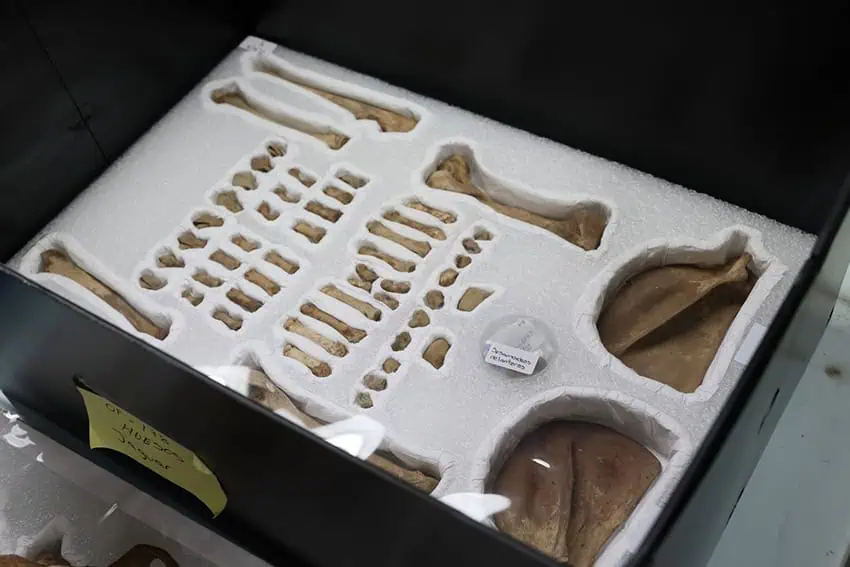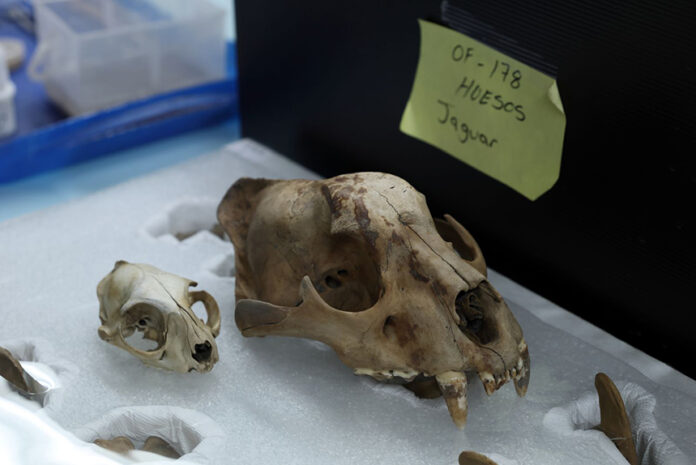This week, the Templo Mayor Project (PTM) provided an update on its latest significant archaeological exploration, an altar offering featuring nearly 20,000 items, including a jaguar adorned with copper bells.
Archaeologist Leonardo López Luján — the director of the project — provided details of the exploration of Ofrenda 178, one of a series of offerings believed to be dedicated to Huitzilopotchli, the Aztecs’ most important deity.

Ofrenda 178 — first discovered in 2018 among 221 offerings stretching across the axis mundi of the Aztecs’ capital city — has yielded 19,700 items since exploration began in 2019. The axis mundi is a concept representing the central point of connection between the heavens, the earthly realm and the underworld.
López Luján said the offering stands out for its richness and diversity, featuring elements from several different regions of Mesoamerica, including items from the shores of the Gulf of Mexico and the coasts of the Pacific.
“We have collected more than 400 coral fronds taken from the Pacific, perhaps from the southern tip of the Baja California Peninsula, as well as 200 starfish, 95% of which are chocolate chip stars (Nidorellia armata),” López Luján said.
Also significant is the opportunity to observe the Aztec predilection for spatial organization and its symbolism.
López Luján said the jaguar was likely captured and kept in the vivarium of Moctezuma Xocoyotzin — who ruled as tlatoani from 1502 to 1520 in what is now Mexico City — until it was selected for sacrifice.
This is the third jaguar found at the Templo Mayor complex, including one dressed as a warrior and placed alongside an atlatl (a spear-throwing device that predates the bow and arrow), as reported by the newspaper El País in 2022.
The jaguar specimen at Ofrenda 178 was surrounded by a large variety of shells, the smallest deposited underneath like a bed. The jaguar was also accompanied by snails, which must have been collected alive because the periostracum (the outer layer of the shell) was preserved.
“All the marine elements must have arrived in pots with seawater to try to preserve them, just as they kept the feline alive until the moment of the grand ceremony,” said PTM archaeologist Miguel Baez.

Another fascinating aspect of the dig, Baez said, has been uncovering samples of an ancient biodiversity that has since been devastated.
“The corals we found, species of gorgonians of the genus Pacifigorgonia, currently proliferate in Nicaragua, but have disappeared from the coasts of Mexico,” he said, adding that the same is true for the four pufferfish that were found.
Baez admitted that it is not clear what contributed to the demise of these species and the loss of large mammal species from Mesoamerican ecosystems.
“These species no longer exist, at least not in the dimensions [found at Ofrenda 178],” he said.
Ofrenda 178 is located beneath the floor of a round structure known as Cuauhxicalco alongside the principal pyramid the Templo Mayor complex in Mexico City’s Historic Center.
Three Aztec political leaders known as tlatoanis — Axayácatl, Tízoc y Ahuítzotl — were interred within Cuauhxicalco, identified by the National Institute of Anthropology and History (INAH) as a ritual platform within the complex.
With reports from El Sol de México and Infobae
